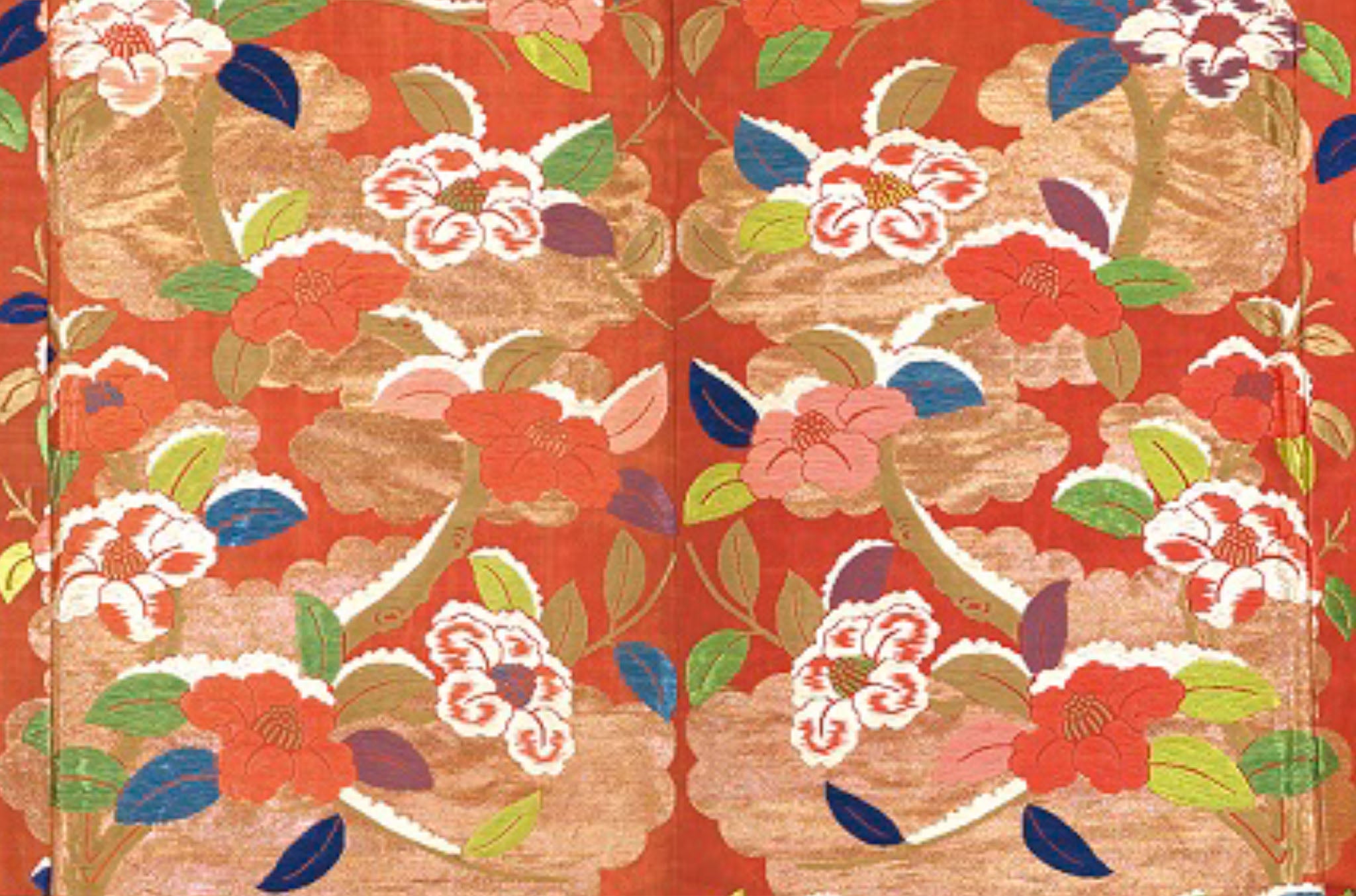By guest contributor Alice Gordenker
With Japan’s borders still closed to international tourists due to Covid-19, travel to Japan remains a distant dream for now. Although no one knows when the country will reopen, there is hope that tourism may resume before the end of the year.
In the meantime, there’s no harm in feeding your fantasies, and an upcoming exhibition in Kyoto is surely the stuff of dreams.
“Masterpieces from the Hatakeyama Memorial Museum of Fine Art: Noh, Chanoyu, and Rinpa” will run Oct. 9 to Dec. 5, 2021 at the Kyoto National Museum, presenting prized objects used in tea-ceremony gatherings, as well as masks and costumes for the Noh theater and artworks expressing the decorative aesthetic known as Rinpa.

For those with an interest in Japanese fabrics, the sumptuous antique kimono worn by Noh actors will be a special draw.
Some of the most luxurious and extravagant kimonos ever made are costumes for Noh, a form of theatrical performance incorporating music and dance that dates back to the 14th century.
Originally the costumes were modest, with actors wearing their usual clothing. But as Noh gained favor with the aristocracy, performers were presented with gifts of beautiful kimono in which to perform. From around the end of the 16th century, a great flourishing in Japanese culture coupled with advances in the fine arts spurred ever higher standards in Noh costuming.

This shift to splendor can be seen in the gorgeous block-pattern kimono pictured above left, to be displayed during the first half of the exhibition, Oct. 9-Nov. 7.
Dating from 1847, the kimono is a type of theatrical robe called an atsuita karaori, reserved for powerful leading male roles such as military leaders and demon gods. This example was passed down through the Maeda family that ruled in what is today Kanazawa in Ishikawa Prefecture. The pattern is made up of alternating blocks of varying patterns embellished with stylized motifs of flowers and bamboo-grass leaves.

The term atsuita originally referred to luxurious fabrics imported from China as bolts rolled around thick wooden boards (atsu ita means “thick board”). During Japan’s Middle Ages, especially around the 15th and 16th centuries, wealthy warlords acquired the fabrics through private trade and presented them to Noh actors they admired.
Later, similar dense silk twills came to be manufactured in Japan, featuring bold geometric backgrounds such as checks, concentric diamonds and zigzag lines, and brocaded with motifs in multicolored weft threads.
During the second half of the exhibition, the robe pictured above right will be on view. It is a karaori, a type of lined kimono used primarily for female roles and made of a stiff brocade. The angular effect when worn is deliberate, as it projects an image of nobility.
 The detail above shows the pattern of clouds and snow-covered camellias. The camellia is a winter flower in Japan, an auspicious motif symbolizing long life and vitality.
The detail above shows the pattern of clouds and snow-covered camellias. The camellia is a winter flower in Japan, an auspicious motif symbolizing long life and vitality.
Snow, too, represents the promise of good things to come, as the melting snow of spring ensures ample water to grow crops and ensure a good harvest. This robe can be dated to 1814 thanks to a notation on protective wrapper in which it was enclosed between performances.
 Interestingly, in Noh the splendor of the costume can be completely out of synch with the social and economic standing of a character, such that a performer playing a poor fisherman may be outfitted in a rich kimono of the highest craftsmanship.
Interestingly, in Noh the splendor of the costume can be completely out of synch with the social and economic standing of a character, such that a performer playing a poor fisherman may be outfitted in a rich kimono of the highest craftsmanship.
The costume nevertheless communicates a great deal about the character to those who understand the conventions of Noh costuming. By reading the colors and combinations of costume pieces, an informed viewer can gauge the gender, age, occupation and even personality of the character on stage.

ABOUT THE EXHIBIT
Issē Hatakeyama (1881-1971) was a wealthy industrialist who practiced both Noh and the tea ceremony. The museum that houses his collection, the Hatakeyama Memorial Museum of Fine Art in Tokyo, is undergoing renovation, making it possible for the finest pieces to travel to Kyoto.
The exhibition also includes ceramics, lacquerware, calligraphy, handscrolls, and paintings.

NOH COSTUMES
To learn more about Noh costumes, visit the official English page of the association of Noh performers +click here
RINPA AESTHETIC
For an explanation of the Rinpa aesthetic by a Metropolitan Museum of Art curator +click here
PLANNING A VISIT
The Kyoto National Museum is one of the major art museums in Japan. Located in Kyoto's Higashiyama ward, the museum focuses on pre-modern Japanese and Asian art.
527 Chayacho, Higashiyama Ward, Kyoto
To visit the Museum’s website +click here
Special exhibition hours 9:30 am to 5:30 pm (enter by 5:00 pm).
Closed Mondays. Please check the website when planning a visit.
ABOUT ALICE GORDENKER
Alice is an American journalist and consultant who lives and works in Tokyo. She is intrinsically involved with the travel industry in Japan—helping Japan be a great host country and educating other countries on the treasures of Japan. Her love of museums keeps her involved with many of the top institutions in Japan.
To visit Alice’s website +click here
Photos of Noh exhibits courtesy of Kunihiko Meguro.









